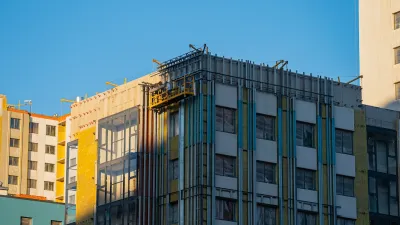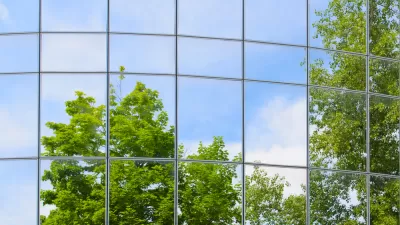Affordable housing advocates find that green building techniques result in higher-quality construction -- and often with costs comparable to traditional building techniques.
The long-held view that green building is too expensive for affordable housing is being challenged. While critics argue that now is not the time (or the market) to incorporate greening into affordable housing, Noreen Beatley, former director of state and local policy for Enterprise Community Partners, suggests the contrary, writing that "these economic times require us to look for the best return on our investments and elected officials know that green building provides that."
Evidence debunking this green "cost myth" has mounted over the past decade. The ongoing operations and maintenance costs that often threaten the sustainability of developments are brought down over time in green building. Recent studies from organizations like New Ecology and the Green CDC Initiative support that green building will minimize these costs over time. "As money for new construction dries up," says Beatley, "preserving and retrofitting existing affordable housing stock to energy efficient, green building standards is of paramount importance."
"Great strides have been made in green building over the past 10 years. Today, more than 50 percent of the housing certified under the LEED for Homes program are affordable. LEED and Green Communities criteria have been updated to reflect innovations and higher performance standards that have evolved as green building practices become more common. LEED for Homes has been expanded to include mid-rise multifamily buildings and LEED Neighborhood Development has become a standard for many public housing redevelopment projects. "
Thanks to Brittany Stanley
FULL STORY: Green Is Affordable

Planetizen Federal Action Tracker
A weekly monitor of how Trump’s orders and actions are impacting planners and planning in America.

Maui's Vacation Rental Debate Turns Ugly
Verbal attacks, misinformation campaigns and fistfights plague a high-stakes debate to convert thousands of vacation rentals into long-term housing.

Restaurant Patios Were a Pandemic Win — Why Were They so Hard to Keep?
Social distancing requirements and changes in travel patterns prompted cities to pilot new uses for street and sidewalk space. Then it got complicated.

In California Battle of Housing vs. Environment, Housing Just Won
A new state law significantly limits the power of CEQA, an environmental review law that served as a powerful tool for blocking new development.

Boulder Eliminates Parking Minimums Citywide
Officials estimate the cost of building a single underground parking space at up to $100,000.

Orange County, Florida Adopts Largest US “Sprawl Repair” Code
The ‘Orange Code’ seeks to rectify decades of sprawl-inducing, car-oriented development.
Urban Design for Planners 1: Software Tools
This six-course series explores essential urban design concepts using open source software and equips planners with the tools they need to participate fully in the urban design process.
Planning for Universal Design
Learn the tools for implementing Universal Design in planning regulations.
Heyer Gruel & Associates PA
JM Goldson LLC
Custer County Colorado
City of Camden Redevelopment Agency
City of Astoria
Transportation Research & Education Center (TREC) at Portland State University
Jefferson Parish Government
Camden Redevelopment Agency
City of Claremont





























